Phototherapy of age spots is a hardware procedure in which excess melanin on the affected area of the face is removed using various cosmetic techniques.
What to choose - cream, IPL, laser resurfacing or chemical peels?
A clear answer to this question can be given by understanding how these different methods affect the skin.
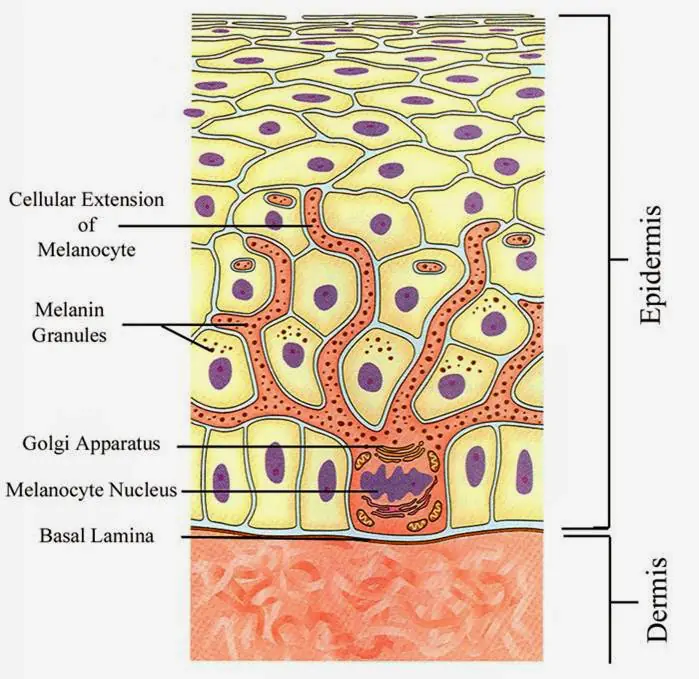
Melanin, which is “responsible” for pigmentation, is located in the cells of predominantly the lower layers of the epidermis. It is this depth that needs to be impacted.
Crema and other superficial bleaching compounds cannot penetrate so deeply into the skin (otherwise, why does the epidermis protect us?), so they only affect the upper layers. If your entire epidermis is “affected” by melanin (and only a cosmetologist can determine this), then a whitening cream is needed as a concomitant correction method. Otherwise, the cream will not help.
Laser resurfacing The epidermis and part of the dermis are thermally evaporated so that new, young skin structures with healthy collagen, elastin, and young cells are formed at the site of damage. It works in a similar way chemical peeling of different depths. For the reasons stated above superficial chemical peels and shallow in their impact laser peels do not reach the required depth and have no effect on the lower layers of the epidermis. But laser resurfacing and medium chemical peelings affect the structures of the dermis, but all at once! All cells and the intercellular space are affected, although only melanin is the target. Why cause unnecessary trauma to the skin if there is a method of acting exclusively on melanin?
IPL phototherapy (broadband pulsed light) - acts exclusively on certain target cells: oxyhemoglobin and melanin. And, unlike laser resurfacing and chemical peeling, it does not injure all other skin components.
IPL phototherapy is a universal procedure that can eliminate pigment spots of any size, shade and structure. The method is one of the most effective in the fight against hyperpigmentation of various origins.
In our clinic, the procedure is carried out using the latest equipment manufactured in 2017, generating light waves in the range of 400-1400 nm from Lumenis. The optimal wavelength for removing age spots is 500-700 nm, but the parameter is selected individually, after examination and diagnosis of the skin condition.
Passing through the tissue, light turns into heat, heats and coagulates the structures responsible for turning the skin dark. To effectively remove age spots, just one session of IPL phototherapy is enough.
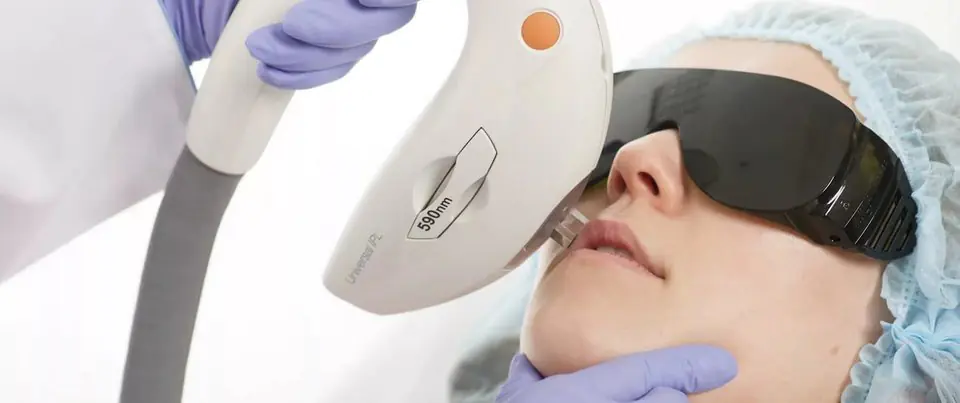
Removing pigmentation on the face IPL indicated for the following types of spots:
- Melasma and chloasma;
- Lentigines (lentigo);
- Keratomas;
- Post-traumatic hyperpigmentation (for example, caused by chemical peeling in the sunny season);
- Freckles (partially).
IPL phototherapy can cope with stagnant pigment spots that appear on the face after acne rashes, infiltrates, wounds and cuts.
In most cases, a single procedure is enough to significantly lighten age spots. If the spots are too large and intensely colored, the doctor can create a treatment course of 3-5 sessions. Long-acting phototherapy regimens are also relevant for those who are pursuing additional goals:
- Skin tightening and lifting (thermolifting effect);
- Narrowing and smoothing of the skin pattern;
- Elimination of vascular formations (rosacea, telangiectasia);
- Refreshment of complexion;
- Smoothing of superficial wrinkles.
The frequency of procedures is once every 3-4 weeks.
How is IPL phototherapy performed?
IPL phototherapy is performed in an outpatient clinic setting, after a preliminary consultation. On it, the doctor assesses the degree of skin damage and its general condition. Then equipment options that are relevant for a particular patient are selected.
Our clinic uses a modern LumenisM22 device with IPL attachments. Procedures using it are painless and safe for the patient.
Before the session, the patient is asked to close his eyes or wear special safety glasses.
An approximate procedure algorithm looks like this:
- Makeup remover;
- Applying a conductor gel to the surface of the skin;
- Setting parameters on equipment;
- Skin treatment with an IPL nozzle that generates short light pulses;
- Reprocessing;
- Applying a soothing mask or cream (optional).
To exclude negative reactions and side effects, the doctor performs “test” flashes in the parotid zone, assessing the degree of hyperemia. For mild or moderate redness, the procedure continues. If the skin reacts too violently, the filter is changed. This is necessary to avoid burns.
The IPL phototherapy procedure is easily and comfortably tolerated by the patient - when the nozzle comes into contact with the skin, only warmth and tingling are felt. Patients with hypersensitive skin or a low pain threshold are offered topical anesthesia with Emla cream. In this case, before the procedure, the cream is applied to the skin, covered with a film and left for 15-20 minutes.
A correctly carried out phototherapy procedure does not injure the skin, so excessive peeling or the formation of a dense crust (which occurs after chemical peels) is completely excluded.
In the first 1-2 days after the session, the intensity of coloring of pigment spots may increase - this phenomenon is normal and indicates that the procedure was carried out competently and correctly.
Can pigmentation appear again?
Unfortunately yes. If the patient is negligent and does not follow the doctor’s recommendations, a similar outcome is possible.
This happens for two reasons:
- Ignoring doctor’s recommendations during the recovery period;
- Ignoring the need for complex treatment of age spots of pathological origin (associated with diseases of the endocrine, hepatobiliary, digestive and other systems).
Turning to incompetent and unscrupulous doctors can also lead to disastrous consequences. Not only can pigment spots appear again, but those that were “removed” can become darker, more pronounced and larger if the equipment parameters were set incorrectly, or a violent skin reaction was left unaddressed during the session.
By approaching the removal of age spots wisely and carefully, you are guaranteed to protect yourself from their reappearance.
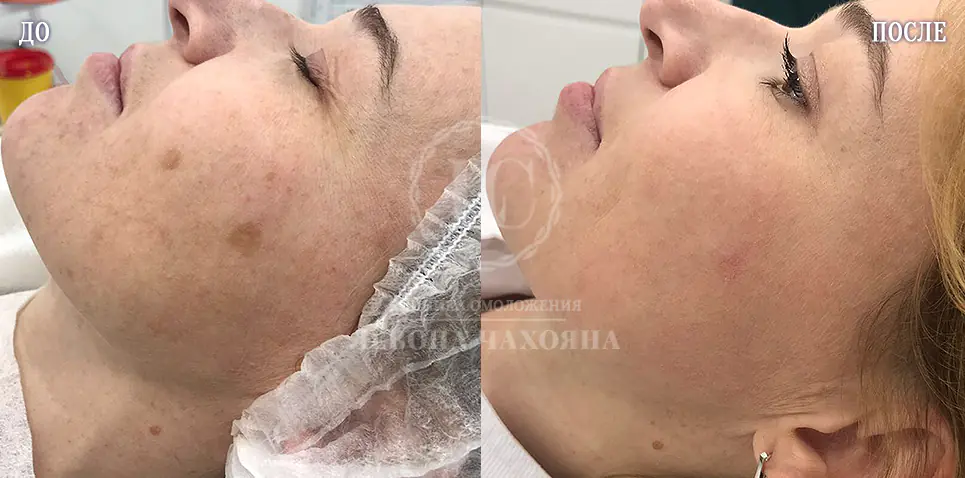
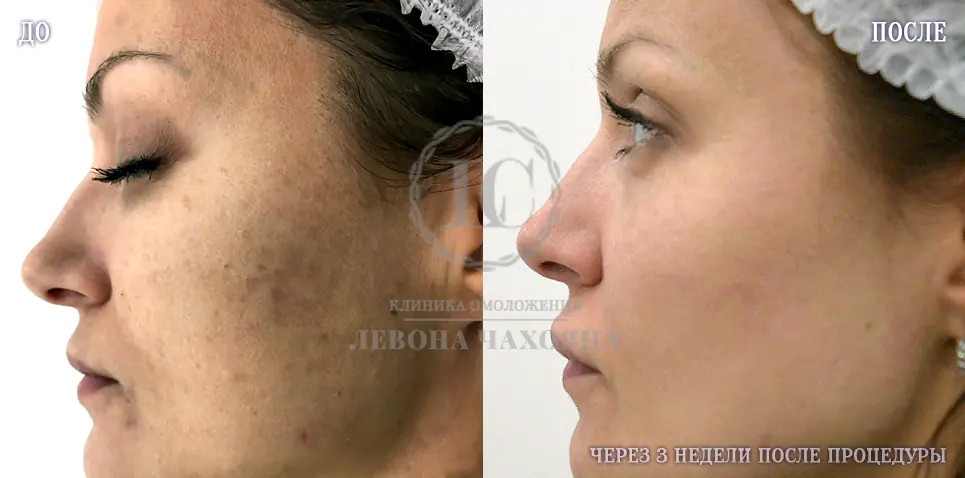
Rehabilitation period after IPL phototherapy
IPL phototherapy is a gentle and gentle procedure, but after it, symptoms such as swelling, redness and changes in skin color may be observed. You can return to your normal rhythm and schedule of life in just a couple of days, but the visual effect of the procedure comes on days 13-18.
A prerequisite for consolidating the results and protecting against side effects is the use of so-called “sanblocks” - sunscreens. The chief physician of the clinic, Levon Chakhoyan, focuses on this when working with each patient. Creams and serums should be selected with the maximum protective factor (SPF45 and higher). Even if the patient claims that he is practically not on the street, but moves by car, this recommendation must be followed! The same applies to cold seasons - even if ultraviolet radiation is not so active in winter, it exists, and the skin must be protected from it.
High SPF creams should be used for 3-4 weeks after the session.
Minor peeling that occurs in the affected areas goes away on its own within 5-7 days during washing. Attempting to speed up exfoliation with your hands or rough abrasives from mass-market scrubs is useless and dangerous. Wait for the regeneration to complete calmly.
Contraindications to IPL phototherapy for age spots
Since IPL phototherapy is a mild treatment, it has minimal contraindications.
These include:
- Malignant tumors;
- Acute inflammatory or infectious dermatological diseases;
- Decompensated diabetes mellitus;
- Taking hormonal drugs and photosensitizers;
- Epilepsy;
- Severe neuropsychic disorders;
- Kidney, liver or heart failure;
- High blood pressure;
- Fresh tan on the skin.
For chronic endocrine diseases, consultation with a highly specialized doctor is strongly recommended.
Content
Phototherapy is a modern method that allows you to get rid of pigmentation in just a few procedures. With proper treatment, rashes will no longer appear and will not spoil your appearance.
The appearance of age spots on the face always frightens men and women, since unpleasant brown rashes can easily ruin the appearance of any person. Fighting pigmentation at home is not effective, since such neoplasms appear on the body and face throughout life, especially if they are removed incorrectly. Therefore, it is important to make a timely decision to get rid of age spots, because they only increase in size every day, affecting an increasingly larger area of the skin of the face and body.
Pigmentation includes freckles and other light or brown colored growths that have different shapes, bases and planes.
Nowadays, the most effective and inexpensive method of treating age spots is phototherapy, which has a positive effect on the skin. Already after 2-3 procedures to remove rashes on the face and body, you can see a significant result, which over time will only consolidate and prevent pigmentation from appearing on the skin again. But, before describing this method of treatment, it is important to find out the reasons for the appearance of age spots on the body and face, since without them, treatment can be considered ineffective and unreliable.
What causes pigmentation on human skin?
The appearance of age spots is caused by a number of reasons that many people encounter in everyday life.
These include:
- skin aging;
- long exposure to the sun;
- pregnancy;
- hormonal changes that occur in the body over time;
- taking certain groups of medications;
- negative reaction to low-quality cosmetics;
- passion for salon procedures such as solarium, peeling and others;
- improper skin care over a long period of time.
If these causes are eliminated, the pigmentation will not disappear on its own - for this it is important to carry out treatment that will help avoid rashes and also return the skin to health and a well-groomed appearance.
The price of this procedure is considerable, but in just 2-3 times you can completely get rid of age spots, unlike traditional methods of treatment, which need to be carried out over several months.
It is important to note that phototherapy easily removes not only “fresh” but also “old” spots that appeared on the face and body a few weeks ago.
In this case, the price for each impact of impulses will be different. Also, the cost of removing age spots depends on the depth of their location - if the tumors are located on the surface of the skin, the price will be significantly lower.
What is phototherapy and how is it carried out in a salon setting?
As mentioned earlier, phototherapy is rightfully considered an effective and modern way to remove age spots. In addition, the procedure gives an instant result that lasts for a very long time on the face and body.
The essence of phototherapy is to treat the skin with pulses that, thanks to heating, destroy melanin (a coloring pigment that causes tumors). Such radiation is absolutely safe for human health. After the procedure, the treated areas darken. Then the skin on them begins to exfoliate, thereby renewing itself and evening out its tone.
The advantages of this method of treating age spots include:
- Safety. Phototherapy is unable to injure tissue, which means there will be no scars left on the face and body, and the skin will not be able to get infected during the procedure. Before performing it, a special gel is applied to the epithelium, and the eyes are covered with glasses.
- Painless. When treating rashes with this method, the patient will only feel a slight burning or tingling sensation. And the process of skin restoration proceeds without pain or pronounced signs.
- Fast recovery. Phototherapy only prohibits the client from using moisturizers and staying in the sun for a long time. In this case, the epithelium can be restored in 2-5 days.
- Efficiency. This method removes stains of any size, regardless of their location. One session involves treating the skin with a wave of light, the length of which depends on the type of spot, the characteristics of the patient’s skin, and the size of the rash.
When carried out correctly, phototherapy guarantees a positive result after the first irradiation.
However, the speed of recovery directly depends on the patient - if he follows all the doctor’s advice and recommendations, the epithelium will recover very quickly.
How is phototherapy performed?
This procedure is carried out in a salon environment in several stages. All of them are inseparable components of this method, so each should be treated with full responsibility - only then will the benefits of phototherapy be maximum, and the absence of one of them leads to irreparable consequences.
This method of getting rid of age spots should only be performed by a trained person who knows all the intricacies and nuances of this work. Otherwise, you can cause irreparable harm to the skin on your body and face.
The stages of phototherapy are as follows:
- Before irradiation, the doctor conducts a consultation, during which the characteristics of the patient’s body, color type of appearance, foci of epithelial damage and their depth are taken into account. Then the specialist sets the treatment period and the frequency of radiation that will be used to treat the affected areas.
- The doctor must ask the client about the presence of pathologies and health problems, since some of them are contraindications to the procedure.
- Then the face is read, after which an anesthetic and cooling gel is applied to it. At the same time, the client should wear glasses that will protect their eyes from burns.
- After this, the skin is treated with impulses emitted by a special device. During phototherapy, the patient will feel a slight warmth and tingling sensation. In total, the client will need to lie down for 30 minutes, during which almost all the melanin will be destroyed and will begin to leave the epithelium through exfoliation.
- At the end, the doctor will apply a special composition to the skin, which will soothe it, relieve redness and slightly moisturize it. If necessary, at this time the specialist will give advice on home care for the face and body that will help avoid relapse.
It is also important to know that after removing age spots, the patient is prohibited from:
- stay in the sun for a long time;
- visit the solarium and other procedures;
- sunbathe;
- use low-quality cosmetics;
- visit solariums, baths and saunas;
- perform facial peeling.
Contraindications to the procedure
In this case, you should choose a different method of getting rid of age spots, since no specialist will carry out the procedure with these contraindications.
Tips to help get rid of blemishes on your face and also prevent the appearance of new rashes:
- You should not self-medicate, as this can only worsen the treatment and also cause increased pigmentation.
- Not only salon procedures, according to doctors, can remove tumors - this can be taking medications, special useful cosmetics, and so on. The type of treatment directly depends on the patient’s health and characteristics of the body.
- You should not visit a solarium or sunbathe frequently, as this often causes the appearance of age spots.
Following these simple tips will help you avoid unpleasant rashes, as well as long and painstaking treatment.
Photorejuvenation is the removal of pigment spots using a photoflash, that is, by exposing the skin to light pulses of 500-1200 nm in length without UV irradiation. The impulses lead to the breakdown of melanin, and as a result, pigmentation disappears, the skin at the site of the spot becomes clean and elastic. In addition, phototherapy for age spots has a positive effect on the condition of the skin: metabolism is activated, pores become narrower, small capillaries and spots become less noticeable.
IT IS IMPORTANT TO KNOW! Even “neglected” acne and pimples can be removed at home, without surgeries or hospitals. Just read what Alena Krivitskaya advises read the recommendation.
How is it happening?
Before photorejuvenation, the doctor must examine problem areas of the skin and rule out possible contraindications. He informs you about the stages of manipulation to get rid of age spots, how long it will take, and what to expect from the recovery process. The patient should be aware of what happens to the skin during phototherapy, what device is used for this, and whether there is a license.
Photorejuvenation manipulation consists of the following stages:
THIS IS REALLY IMPORTANT! An effective and affordable remedy for acne and blackheads. find out what kind of anger >>
- The doctor applies a product to the skin that cools it and conducts light beams well.
- To protect against rays, special glasses with dark lenses are worn.
- A device with an IPL tip is brought to the pigment spot, and by pressing a button it begins. Exposure of certain areas to flashes of light. Cells with a large amount of melanin are destroyed, and healthy ones are restored in their place.
- The session time depends on the size and amount of pigmentation on the skin.
- At the end, the skin is treated with a soothing agent (Panthenol).
How many procedures are needed?
The length of a pigment spot removal session varies depending on how severe the pigmentation problem is. A session can last just a couple of minutes or more than 1 hour. At the end of the session, there will be some redness in the treated areas, but this will go away quickly. Doctors recommend avoiding sunlight for 2 weeks after the procedure, applying sunscreen to areas with lightened pigment spots, and refraining from aggressive skin cleansing (peelings, masks) for 3-4 days. By following the recommendations, the patient sees changes for the better after the first session: the skin becomes smooth, elastic, and acquires a healthy color.
Very important! Krivitskaya A.: “I can recommend only one remedy for the quick treatment of pimples and blackheads” read more.
To photo-remove pigmentation on the face and rejuvenate the skin, you need to carry out a full course of therapy. The manipulation is indicated for people with severe photoaging, a problem that occurs due to the negative influence of UV rays. On average, a course of getting rid of age spots consists of 2-7 manipulations, with a break of 3-4 weeks. The appearance of the skin at each stage becomes better and better, and at the end of the course the patient will experience, in the full sense of the word, a transformation - the skin is tightened, lightened by several tones, the number of post-acne, capillaries and spider veins is reduced. The skin will remain in this healthy state for a very long time.
Rehabilitation period
After photorejuvenation, the doctor recommends careful treatment of the skin, without exposing it to aggressive agents:
- You should avoid visiting a solarium, bathhouse or sauna.
- It is not recommended to apply decorative cosmetics in the form of foundation for 4-5 days.
- In order for the epidermis to produce healthy cells, it is worthwhile to temporarily abandon alcohol-containing care products. This dries out the renewed skin.
- As for alcohol, it is better to remove it from the diet for 5-7 days. Alcohol tends to destroy cell membranes, which adversely affects the recovery process.
- Doctors advise drinking plenty of fluids and not smoking excessively.
However, if a master of his craft does photorejuvenation of age spots, the recovery period will take several hours, not days. Unlike other complex cosmetic procedures (laser resurfacing), the skin recovers from swelling and redness much faster after manipulation.
PAY ATTENTION! Find out how to quickly and reliably remove acne and terrible pimples. find out >>
Contraindications to removing pigment spots using flash
Phototherapy for age spots has a number of contraindications:
- recent tanning;
- dark skin tone;
- pregnancy and lactation;
- herpes during an exacerbation;
- wounds and scratches on the skin;
- period of taking medications that increase photosensitivity;
- cancer;
- photodermatosis;
- high blood pressure;
- teenagers under 16 years of age;
- epilepsy;
- mental illness;
- diabetes;
- thyroid diseases;
- the presence of prostheses, knitting needles and metal inserts in the patient’s body;
- presence of a pacemaker.
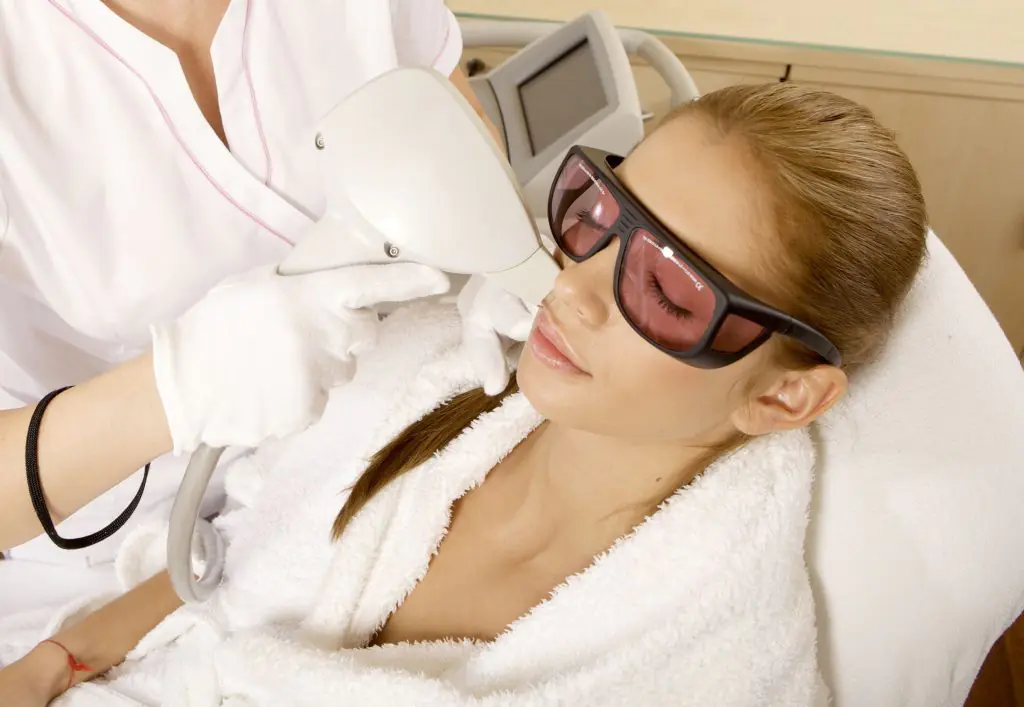
If you have problems with the skin, heart, or thyroid gland, it is better to refuse photorejuvenation.
Pulsed effects on age spots involve powerful penetration of light beams into the skin. Therefore, during pregnancy, this procedure is strictly contraindicated, since it is unknown how the rays affect the fetus. If there are no above-mentioned health problems, the patient can safely prepare for a course of phototherapy.
Complications
Complications after photorejuvenation therapy occur in cases where the patient did not follow the recommendations for the recovery process. It happens that the doctor himself did not take into account contraindications, showing unprofessionalism. Common complications after phototherapy to get rid of age spots include swelling, redness, and bluishness of the skin.
Swelling is one of the most common side effects. Swelling may remain for 2-3 days after the session. As a rule, the complication goes away on its own, so you don’t need to do anything for the first few days. If the swelling does not disappear or even, on the contrary, increases, you need to return to the salon and get advice from a specialist on what to do next. At home, you can make compresses using ice and brewed medicinal herbs.
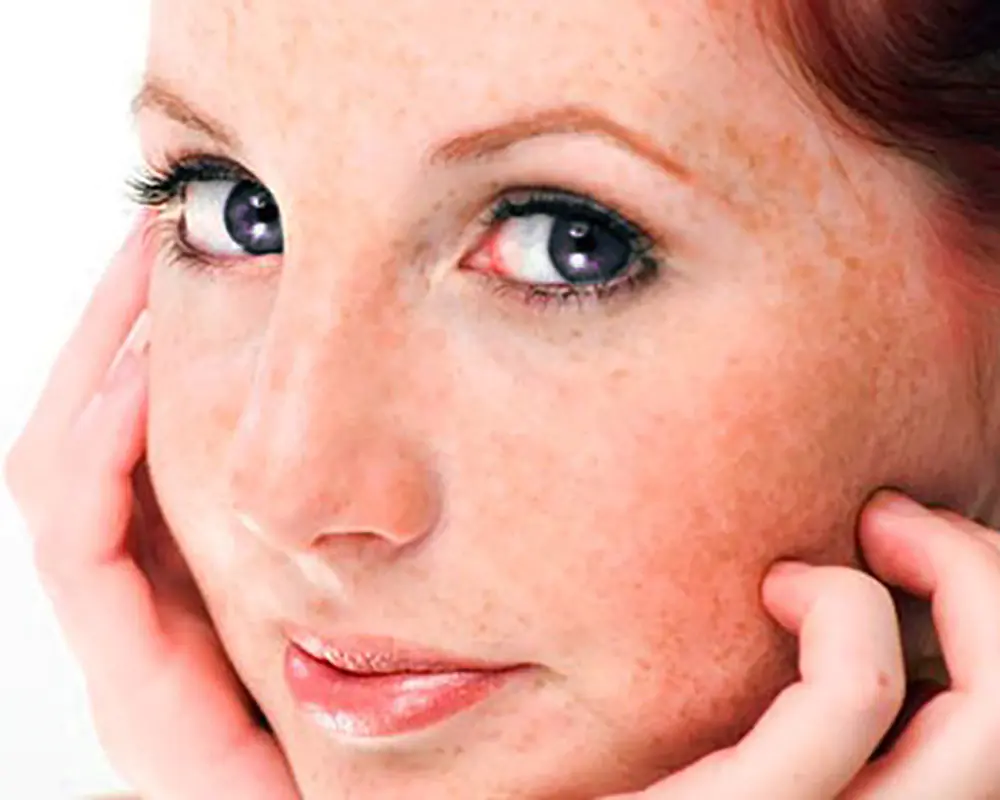
Redness may remain on the skin for a couple of days after photorejuvenation. Return to contents
Hyperemia in the form of redness occurs due to the aggressive effects of pulsed light. Redness may remain on the skin for 2-3 days or longer; there is nothing dangerous about it. If the area with redness hurts when touched or spreads throughout the face, you should definitely consult a doctor. Often hyperemia occurs along with edema.
Very rarely, bruises may remain at the site of exposure to light beams after manipulation. This means that the cosmetologist incorrectly set the power on the phototherapy device for age spots. The cause of their occurrence may also be taking certain medications a month before the session. These include aspirin, retinoid drugs and antibiotics.
Advantages and disadvantages
Before going to a beauty salon, you need to know all the pros and cons of the photorejuvenation procedure for age spots. The most significant ones are summarized in the table:
For some people, the disadvantage is the ban on the use of decorative cosmetics for the first 6-7 days after the procedure. Some discomfort may be caused by the fact that before and after the photorejuvenation procedure for pigment spots, you should not sunbathe for 2 weeks. In the future, before tanning, you need to apply protective products with a high SPF factor (not lower than 30).
Do you still think that it is impossible to get rid of acne or acne?
Judging by the fact that you are reading this article, victory was not on your side. And of course you know firsthand what it is:
- again to refuse an evening with friends because of the hateful rashes
- wake up in the morning with another new abscess
- a constantly seething cocktail of pimples, blackheads and hormones
- inflamed, bumpy skin
- acne, pimples, demodex, post-acne, pustules.
Now answer the question: are you satisfied with this? Can acne be tolerated? How much money have you already wasted on ineffective treatment? That's right - it's time to end them! Do you agree? That's why you should read what Alena Krivitskaya did against acne and acne. Read more.
>



